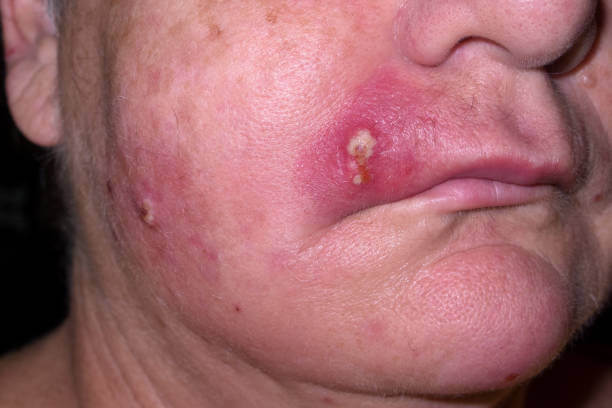Did you know that Staph bacteria can hibernate on your skin surface and, in this environment, can be relatively harmless? However, if you have an injury or a weak immune system, these harmless bacteria infiltrate the skin and cause an infection.
Staphylococcus infections are responsible for causing different illnesses such as boils, acne, impetigo, or carbuncles. While most of these infections are non-life-threatening, staph can cause severe illness or death if it enters the bloodstream.
Treatment usually involves antibiotics; however, some strains no longer respond to antibiotics.
What are the Primary types of Staph Bacteria?
Staph bacteria contains at least 30 different strains that can affect humans; here are the primary strains of staph bacteria. You must understand the various strains of staph bacteria to provide the best treatment properly.
Staphylococcus Aureus
Skin bacteria such as Staphylococcus aureus are pretty common and affect about 20% – 30% of Americans. Staph can colonize on all parts dot the skin; however, they are primarily found in the nose, hands, and perineum (between the thighs).
Staphylococcus aureus causes mild skin and tissue irritation such as acne, cellulitis, furuncles, and abscess (boil). Although most staph infections are not severe, they can progress into life-threatening conditions if not properly managed.
Methicillin-resistant Staphylococcus aureus (MRSA)
Methicillin-resistant Staphylococcus aureus (MRSA) is a virulent and drug-resistant strain of Staph bacteria. Research shows that MRSA mutates due to antibiotics overuse, making it resistant and challenging to treat using conventional antibiotics.
Around 1% of the 20%-30% of Americans who carry staph colonize this strain. Without proper management, MRSA may cause life-threatening conditions or even death.
VRSA (Vancomycin-resistant S. aureus)
VRSA, also known as GISA (glycopeptide intermediate Staphylococcus aureus), is a rare strain of staphylococcus that has developed resistance to a class of glycopeptide antibiotics called vancomycin.
Treatment for this strain of staph infection is limited because doctors only recommend vancomycin as a last resort when another form of medication fails.
If you suspect a staph infection, contact your doctor to administer a culture for diagnosis and treatment.
How do you contract Staph Infection?
Knowing the causes and modes of transmission of the staph bacteria is the best way to deal with and prevent its spread. We’ve listed some of the most common reasons below.
Skin Penetration
Staph bacteria can be lying dormant on your skin; however, this dormancy can be broken and lead to an active infection if you have an injury or cut.
Ingesting Contaminated Food and Drinks
Staph bacteria can survive in food that has not been stored or prepared correctly. Keeping food at an inappropriate temperature will provide a conducive environment for staph multiplication. Food products that can colonize staph bacteria include fish, milk, mayonnaise, etc.
Use of High Absorbent Tampons
Absorbent tampons can be a suitable breeding ground for staph bacteria due to the wet environment created by the tampon. This type of staph infection can cause toxic shock syndrome (TSS).
What are the Symptoms of Staph Infection?
Generally, staph doesn’t usually cause severe symptoms as long as they are dealt with early; however, you will experience varying symptoms depending on the location and type of infection.
Symptoms for Skin Infection
Staph infections on the skin cause boil that are red and painful acne. They can also cause cellulitis and impetigo.
Symptoms for Toxic Shock
Toxic shock is a life-threatening condition linked to some strains of bacteria caused by specific surgical procedures or wounds. Toxic shock syndrome can cause:
- Vomiting and diarrhea
- Rask on the skin resembling a sunburn
- High fever
- Abdominal pain
- Muscle ache
Symptoms for Food Poisoning
Staph infection is one of the common causes of food positioning occurring when you ingest contaminated food. Symptoms often resolve within a few days without treatment; however, your doctor may prescribe a few medications to help ease discomfort.
Symptoms of food poisoning include:
- Nausea and vomiting
- Fever
- Dehydration
- Diarrhea
How Can You Prevent Staph Infection?
There are specific preventive measures you can maintain, to keep you and your loved one safe from this infection. Here are the preventive measures to avoid staph infection:
- Practice good hygiene such as washing your hands with soap and water
- Avoid sharing toiletries and sharp personal equipment
- Carefully treats injuries in case of an accident
- Practice food hygiene and store food at a temperature of 280F -320F
If you experience early symptoms of an active staph infection, consult your doctor for diagnosis and treatment.
How do you Treat Staph Infection?
Your doctor will recommend a treatment course depending on the type of infection. If you have an abscess, your doctor may drain the puss or prescribe medications to relieve pain and discomfort.
In cases of antibiotic-resistant strains of staph bacteria, consult your doctor about alternative treatment options.


